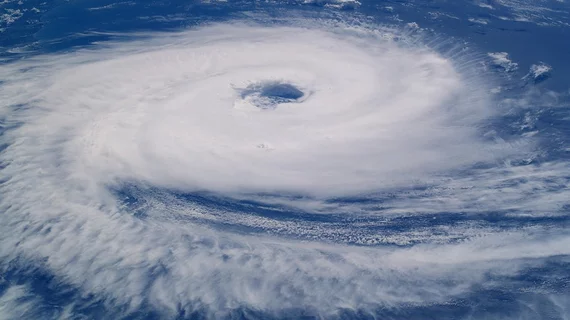Cardiovascular hospitalizations in Louisiana rose sharply after Hurricane Katrina made landfall in August 2005—an increase that seemed to disproportionately affect black patients—Tufts researchers reported in the International Journal of Environmental Research and Public Health.
Ninon A. Becquart, a data analyst at Tufts University, and co-authors said research on health and healthcare disparities directly impacts the way we respond to and recover from disasters, but the field “is in great need for a thorough evaluation.”
“Most disaster response models focus on acute injury treatment, environmental risk management and infectious disease prevention,” Becquart and colleagues wrote. “However, interviews and focus groups with both providers and survivors contrast with the need to also include continued care for survivors with chronic conditions such as cardiovascular disease.”
After Katrina, which affected older adults, black Americans and low-income communities more than other demographics, the death toll was 971. The authors said the majority of those fatalities were in elderly individuals—almost half of all deceased patients were older than 75. Eighty percent of New Orleans flooded during the worst of the storm, and damaged areas of the city had higher proportions of black residents and poor households than undamaged areas (45.8 percent versus 26.4 percent and 20.9 percent versus 15.3 percent, respectively).
Becquart et al. compared CVD hospitalizations before, during and after Katrina among white and black residents in three Louisiana parishes: Orleans, Jefferson and Baton Rouge. The former two counties were most severely affected by Katrina and its aftermath; the latter hosted thousands of evacuees. Using CMS data, the researchers compiled 383,552 CVD hospitalization records for local patients aged 65 and up between 2005 and 2006.
Of all hospitalizations reported, Becquart and co-authors said 119,612 listed CVD as a primary cause of hospitalization, including acute pericarditis, endocarditis, cardiomyopathy, cardiac dysrhythmias, heart failure and other complications.
The team found that in Orleans parish, hospitalization rates peaked on the sixth day after Katrina made landfall, with an increase from 7.25 hospitalizations a day per 10,000 adults to 18.5 hospitalizations a day. After around two months, which was about the time flood waters had been mostly cleared out of the city, hospitalization rates returned to normal.
In the week and month following Katrina’s landfall, overall CVD hospitalizations in Jefferson parish rose from 5.9 per day to 7.5. Racial disparities were highlighted in Orleans, where, a week after the hurricane hit, CVD rates increased to 26.3 cases per day in black patients and 16.6 cases per day in white patients. Hospitalizations due to hypertensive heart diseases were also two times higher in black patients than whites (9.8 percent versus 4.7 percent).
“The already-existing gap in CVD rates between black and white older adults has predisposed blacks to be more greatly impacted in the aftermath of the storm,” Becquart et al. wrote. “[A] possibility could be that access to healthcare and other resources differed significantly for these two racial groups following the storm, so black individuals were still experiencing CVD events but were faced with limited hospital access.”
The researchers said CVD rates likely intensified as a result of stressors like having to search for food and shelter, relocating, crowding, being in financial hardship and dealing with insurance companies and social services. Hurricanes and other natural disasters can cause chronic and acute mental stress, and Becquart and colleagues said psychological stress has been suggested in recent years as a risk factor for CVD.
“After all, traditional cardiac risk factors only account for half of the causes of CVD, with most of the remaining risk explained by psychosocial factors,” the authors wrote. “Considering the staggering economic and health impacts of such disasters, lessons from the past hurricanes, including Katrina, should inform future health management decisions.”

